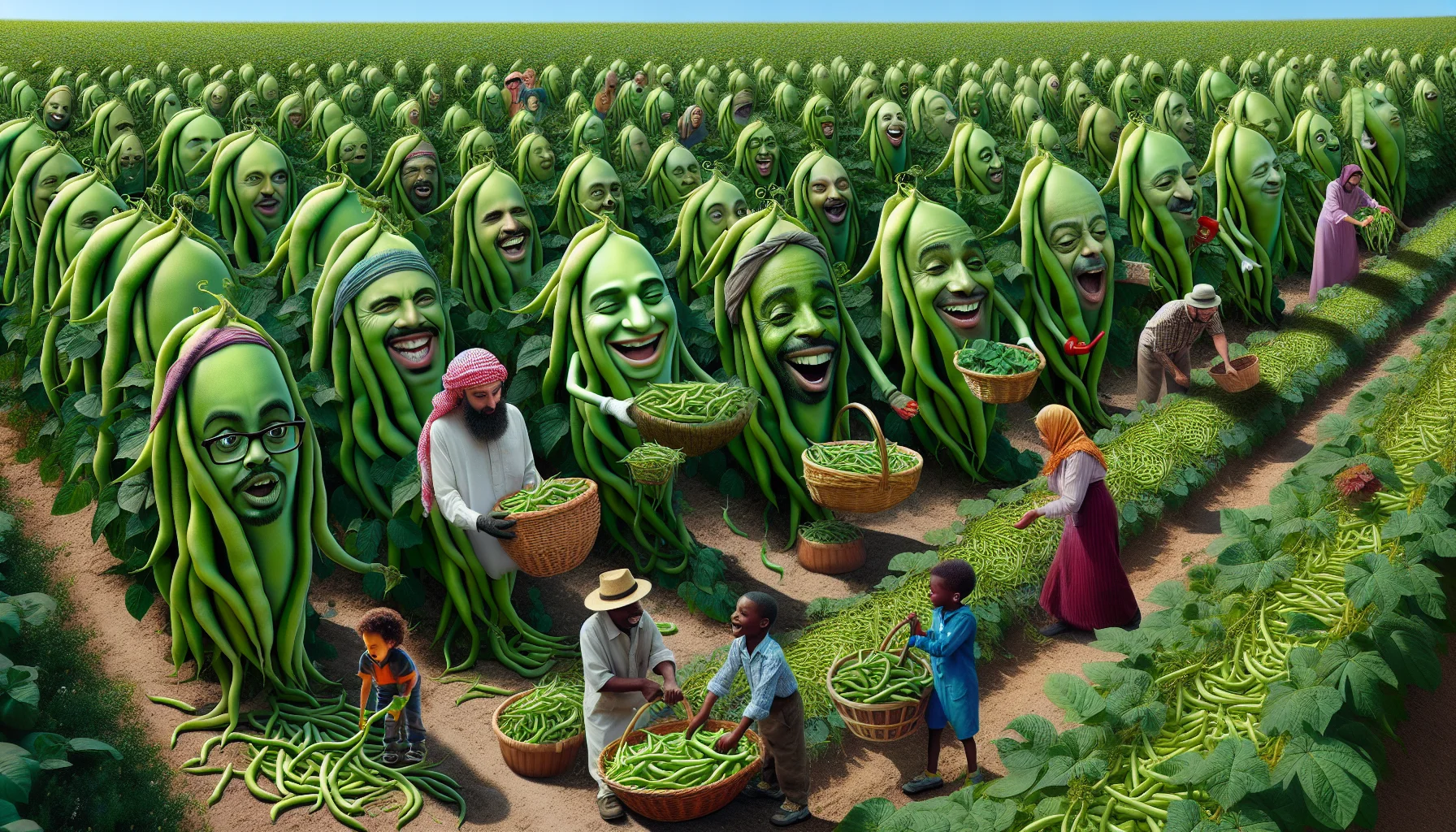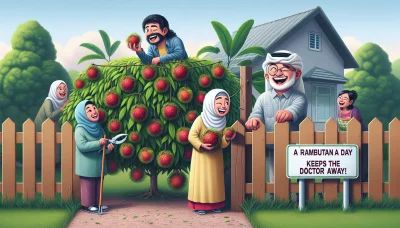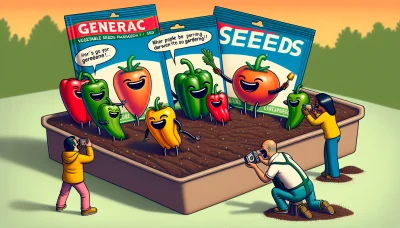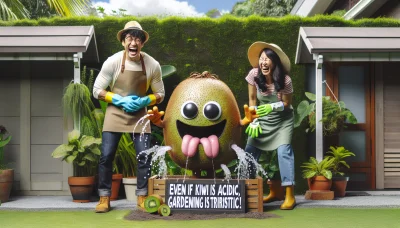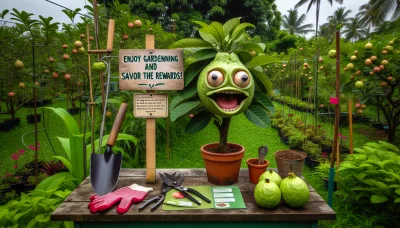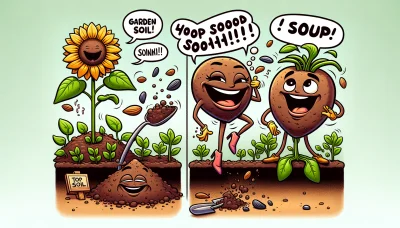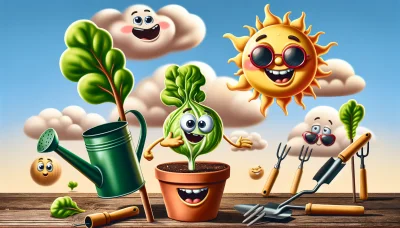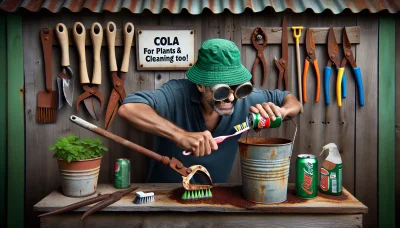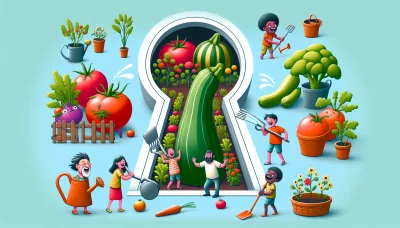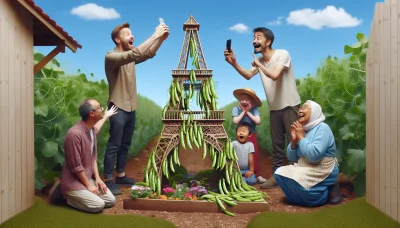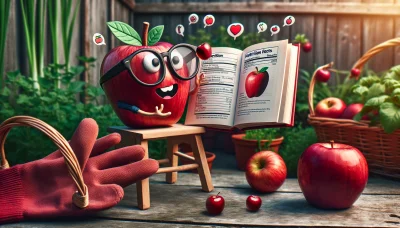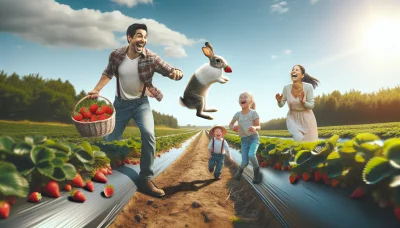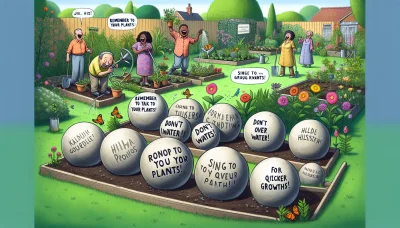How many green beans per plant Quiz
Test Your Knowledge
Question of
How Many Green Beans Per Plant?
Green bean cultivation is a topic of great interest to gardeners around the world. These versatile and nutritious vegetables are not only easy to grow but also yield a significant harvest, making them a favorite in vegetable gardens. Understanding the potential yield per plant is crucial for planning your garden space efficiently and ensuring a bountiful harvest. In this discussion, we'll explore the factors that influence green bean production and offer insights into maximizing your yield.
Understanding Green Bean Varieties
Green beans, a staple in gardens and kitchens around the world, come in a variety of types that can be broadly categorized into bush beans and pole beans. Each variety has its unique characteristics, growth habits, and culinary uses, making it important for gardeners and cooks to understand their differences.
Bush beans, as their name suggests, grow in a bush-like fashion, spreading outwards rather than climbing. They tend to mature all at once, providing a bountiful harvest over a few weeks. This characteristic makes bush beans ideal for those who wish to freeze or can their produce. They are also well-suited for small gardens or spaces where trellises or supports are not feasible.
Pole beans, on the other hand, are climbers that require support in the form of trellises, poles, or nets. They grow vertically, which can save space in the garden and make harvesting easier. Pole beans tend to have a longer production period, often yielding beans throughout the growing season until the first frost. This continuous harvest makes them a favorite for gardeners who prefer to eat their green beans fresh.
The choice between bush beans and pole beans can also impact yield. Generally, pole beans produce more beans over the longer growing season, but bush beans can offer a quicker, more concentrated harvest. The decision on which type to grow may depend on the gardener's space, time, and culinary preferences.
Factors Affecting Green Bean Yield
Several factors significantly influence the yield of green beans, each playing a crucial role in the growth and productivity of green bean plants. Understanding these factors can help gardeners and farmers optimize their yields.
Planting Density: The spacing of green bean plants is a critical factor that affects their yield. If plants are spaced too closely, it can lead to competition for nutrients, water, and sunlight, which can reduce overall yield. On the other hand, too much space between plants can result in underutilization of the available growing space, leading to a lower yield per unit area. Finding the optimal planting density is key to maximizing yield.
Soil Quality: Soil health is another vital factor that impacts green bean production. Green beans thrive in well-drained soil rich in organic matter. The pH level of the soil also affects the plant's growth; green beans prefer slightly acidic to neutral soil (pH 6.0 to 7.0). Regular soil testing and amendments can help maintain optimal soil conditions for green beans.
Water Availability: Consistent and adequate watering is essential for green beans, especially during the flowering and pod development stages. However, overwatering can lead to root rot and other diseases, while under-watering can stress the plants, leading to reduced yield. Implementing a balanced watering regime that meets the plants' needs without overdoing it is crucial for maximizing green bean production.
Sunlight Exposure: Green beans require full sunlight for optimal growth. They should receive at least six to eight hours of direct sunlight daily. Adequate sunlight is crucial for photosynthesis, the process by which plants produce the energy they need to grow and produce pods. Insufficient sunlight can lead to weak plants and reduced yield.
By carefully managing these factors, gardeners and farmers can significantly improve the yield of their green bean crops, ensuring a plentiful harvest.
Average Yield Per Green Bean Plant
When it comes to growing green beans, gardeners can choose between bush and pole varieties, each offering different growth habits and yields. On average, a bush bean plant can produce between 3 to 5 pounds of beans throughout the growing season. Pole beans, with their vining nature, generally yield more, averaging about 5 to 8 pounds per plant. However, these numbers can vary based on factors such as the specific variety, growing conditions, and how well the plants are tended.
Maximizing Your Green Bean Harvest
Green beans are a popular and rewarding crop for many gardeners, providing a bountiful harvest throughout the growing season. To maximize the yield of your green bean plants, there are several key strategies you can employ, from proper spacing to diligent pest control.
Firstly, spacing is crucial for the healthy growth of green beans. Plants should be spaced about 2 to 4 inches apart within rows, and rows should be 18 to 24 inches apart. This spacing allows for adequate air circulation, which is essential for preventing diseases and ensuring that each plant receives enough sunlight and nutrients to thrive.
Fertilization is another important aspect of maximizing your green bean harvest. Before planting, enriching your soil with compost or a balanced fertilizer can provide a strong foundation for your plants. Green beans do not require a lot of nitrogen, so avoid over-fertilizing, which can lead to lush foliage at the expense of bean production. A mid-season side dressing of compost or a phosphorus-rich fertilizer can help boost production if plants seem to be lagging.
Pest control is vital for ensuring that your green beans reach their full potential. Common pests such as bean beetles can be managed through regular inspection and hand-picking or the use of organic pesticides. Implementing companion planting, such as planting marigolds nearby, can also help deter pests naturally. Additionally, using floating row covers until flowering can protect the plants from early pest damage without interfering with pollination.
By following these tips and remaining vigilant in the care of your green bean plants, you can enjoy a plentiful and satisfying harvest. Remember, the key to a successful garden is consistent care and attention to the needs of your plants.
Common Challenges in Growing Green Beans
Green beans are a popular vegetable in many gardens, but growing them can come with its share of challenges. One of the main issues gardeners face is diseases. Common diseases affecting green beans include bean rust, powdery mildew, and bacterial blight. To combat these, it's crucial to practice crop rotation, avoid overhead watering to keep the foliage dry, and use disease-resistant bean varieties whenever possible.
Pests are another significant concern when growing green beans. Aphids, spider mites, and Mexican bean beetles can all wreak havoc on a green bean crop. Regularly inspecting plants and employing natural predators like ladybugs can help manage these pests. In severe cases, organic insecticidal soaps or neem oil may be necessary to protect the plants.
Environmental stress, including improper watering, nutrient deficiencies, and extreme temperatures, can also affect the growth of green beans. Ensuring consistent watering, especially during flowering and pod formation, is key to avoiding stress from drought. Additionally, a balanced fertilizer can help prevent nutrient deficiencies. Protecting plants from extreme heat with shade cloths and ensuring good air circulation can mitigate temperature stress.
By understanding and addressing these common challenges, gardeners can enjoy a bountiful harvest of green beans. With the right care and preventive measures, it's possible to minimize the impact of diseases, pests, and environmental stress on your green bean plants.
Conclusion: Enjoying a Bountiful Green Bean Harvest
We've explored a variety of strategies and insights aimed at maximizing your green bean yield, from selecting the right variety for your climate to the importance of proper planting techniques, consistent watering, and effective pest management. By applying these tips and dedicating care and attention to your green bean plants, you can look forward to a bountiful harvest. Remember, the success of your green bean crop is greatly influenced by the care you provide, so keep nurturing your plants, and soon you'll enjoy the fruits of your labor. Happy gardening!
